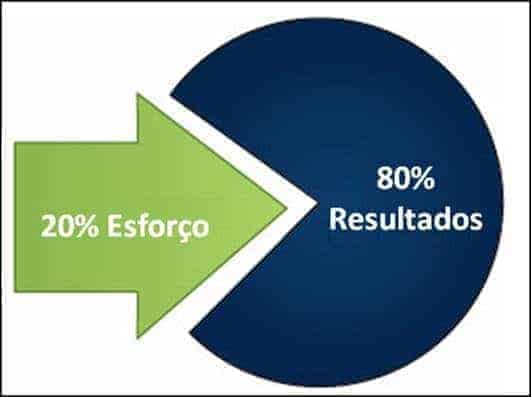How do I achieve the Fitness results I want?
How many meals and workouts should I do?
How many sets and repetitions?
Am I going to fail?
Do I really have to eat chicken breast and broccoli every day from morning to night?
I don't know if I'll be able to do it all...
If you are lost among so many doubts, this article is perfect for you.
I would like to share with you that my background is scientific and focused on physics, chemistry and mathematics.
My higher education course consisted of a lot of mathematics and I have always been a person extremely connected to these subjects. The fitness journey I have been on is an example of this.
With regard to diets, I could state the Principle of the Law of Thermodynamics (PYRAMID OF METABOLISM), or Newton's second law that corroborates the principle of force, which many athletes apply when performing exercises with explosive movements (F= mxa).
Throughout this article I will use bases such as the Power Law and the Pareto Principle.
Society and lack of time
In today's society, extremely busy people benefit from efficiency. This means investing as little as possible to obtain the greatest possible benefit (applicable to everything in life). While this is one of my mottos, it is important to remember that it does not apply to everyone.
For the majority of people who do not intend to follow any competitive sport, we can achieve great results without extremism in the effort applied.
Anyone who has an adequate diet, made up mostly of as little processed food as possible, does anaerobic physical exercise (bodybuilding) and some less heavy activities (like playing football with friends, yoga classes, etc.), will be able to achieve acceptable results in terms of body composition and being quite strong (at least above the general population).
For most people, this effort, when applied correctly, is enough for a long life of success and satisfaction.
But there are still those who want to go beyond “enough”. For these athletes it is necessary to understand that our effort has to change.
You will certainly have heard of the Pareto Principle, referring to the 80/20 rule.
How does this principle apply in Fitness?
Basically, this principle shows us that it will be possible to achieve 80% of results with 20% of effort, which for many people with moderate goals is sufficient.
If, by chance, we talk about someone who wants to be the best, or at least intends to do their best at maximum splendor, the other 80% of effort are crucial and have their weight.
Someone who trains to be as strong as possible will probably involve spending more time in the gym, working on recovery capacity, working on mobility, preparing meals and being willing to sleep a minimum of hours in order to recover.
If, on the other hand, you are someone who wants to compete in bodybuilding or in the Men's Physique modality, we are talking about training that overcomes all gaps in body harmony, in which there will be much more time dedicated to cardio, preparing meals, in order to to achieve very low levels of body fat, with more dietary restrictions (restriction on off-plan meals), etc.
Basically, the main question we have to ask is: how much do the other 80% of effort mean to each of us?
Analyzing the 80/20 rule
Let us consider the following principles:
- Power Law
- The Parable of Stress
The basic idea implicit in the power law is that most results come from a small amount of what we apply and that applying more effort will mean more results, but not in the same proportion, nor with such noticeable effects.
Also known as the Law of Diminishing Returns, the marginal product of a factor of production will reduce as the quantity used of that same factor increases.
In this sense, it can be said that when additional units of work are used, total production increases, however, after a certain point, marginal production tends to decrease, due to the use of less productive (efficient) factors. to meet growing demand.
This type of law applies mainly to non-stressful factors for those who train, regularly associated with the post-workout recovery category.
Therefore, each increase in these variables initially represents a large increase in results.
However, each subsequent increment will represent a smaller production of results, to the point that any increment will not bring any benefit.
Let’s analyze the practical application in 4 important points:
- Frequency of our meals
- Anabolic window
- Sleep/rest
- Training frequency
Frequency of our meals
As a follower of Intermittent Fasting (Intermittent Fasting), for a long time I didn't go beyond 3 meals a day. Normally my days consisted of 2-3 meals, depending on my schedule and availability to close my macros.
Thanks to science, it was possible to demonstrate to the general population that the myth of “eating every 2 hours will boost your metabolism” It is not true, nor is it properly proven.
Many, unfortunately, have fallen into the opposite extreme, believing in the idea that “meal frequency doesn’t matter”.
There were many times when people asked me: “Can I only eat one meal a day?”.
Without a doubt, the most important factor in the success of the diet is the total daily calories, and I defend this at all costsHowever, there is also some importance in the timing and quantity of meals eaten.
Obviously it is more viable to eat 1 meal per day, than one meal per week, even if the weekly caloric value is the same.
In the same way as eating 3 meals a day will be a little better than eating just 1 meal per day, especially because we can better space our intake throughout the day.
However, you must be aware that after a certain point, more quantity does not mean more results.
Is there any proof that six meals are better than three? No.
There is proof that nine meals are better than six? Neither.
This is where common sense and adjustment to each person come in.
Training frequency
We hear more and more that increases in strength mean increases in muscle mass. Therefore, it is increasingly common to propose full body training, three times a week, as a general formula for success.
I am an advocate of these workouts for beginners, not only because the more they practice the basic exercises, the better they perform them, but also because it allows for an evolution in the progression of loads.
However, it is important to understand that force alone may not be the only solution, as the main factor responsible for muscle growth is volume (with a great impact from mechanical tension).
The power law also applies in the following example: ?Performing one exercise/muscle per week is better than training only once a month?.
If we continue to increase training frequency there is a point in time when increasing frequency only means a minimal (or no) increase in strength gains (and especially in muscle mass).
Most people benefit from training each muscle twice a week instead of once.
However, the difference between training the same muscle twice a week and three times is minimal, and so on, until the stage of being counterproductive, which will be discussed later in the article.
Anabolic window
In some articles the approaches to the immediate anabolic window after training have already been demystified, often saying that this ?window? it's only 30-60 minutes.
However, we cannot rule out that although the anabolic window is wider than 60 min, it actually exists after training.
I don't know anyone who doesn't consume any type of food after training (unless after training they decide to fast until death!).
In this sense, we should not reject the idea that there is a benefit in consuming some protein of high biological value, in order to ensure that we have enough substrate for our body, after an intense exercise session. The same applies to some quality carbohydrates.
In this case the same principle applies, as long as there is a good division of macronutrients and adequate calories, it will be possible to guarantee an adequate anabolic environment for our body, small details can positively influence a diet, but they are still details from the point of view. global.
Sleep/Rest
It is possible and quite easy to survive on just a few hours of sleep a day. The first hours of sleep are the most important for rest.
In this sense, simply resting for a few hours will always be more productive than not resting at all. However, the benefits increase if the athlete is guaranteed a night's sleep of between 7 and 8 hours a day, on average, compared to an athlete who only rests 5-6 hours.
Beyond a certain limit, there is no data that proves the existence of more benefits for those who sleep more than 8 hours, or that hibernating for 24 hours will make someone a “Genetic Freak”.
In summary
- Eating more times a day doesn't mean much more results. In my opinion, 90% people survive optimally a lifetime on 3-4 meals a day.
- Going to the gym more often does not mean more results. In my opinion, 90% people get the results they are looking for with as little as going to the gym 3-4 times a week.
- Drinking a shake after training doesn't make anyone grow faster. In the same way that if you don't drink it, it doesn't make your muscles fall apart. However, we cannot discount the importance of a post-workout (and for some people pre-workout) meal suitable for muscle recovery and reconstruction.
- Hibernating doesn't bring miracles, nor do mid-afternoon naps. Try to get a restful night's sleep of around 7-8 hours every day (if possible, try to have the same time every day).
The Parable of Stress
Small amounts of stress will not provoke huge adaptive responses, but too much stress to the point that recovery is not possible also decreases the ability to adapt and recover.
Therefore, there is a maximum limit for each person, which the body can recover and adapt to the stimulus we give it.
From a certain amount of stress (too much) the results are the same as someone who falls a little short of the stress they could handle. In this sense, it can be said that more is not always better and that we should make changes and increments as small as possible, in order to analyze our body's reaction and adaptation.
Three examples that fall into the stress parable are: Training Volume, Training Intensity and Cardio.
Training volume
Based on a study by James Kreiger on the number of effective sets and their results, it was illustrated that 2-3 sets for a given exercise are superior to just 1 set, and that possibly 4-6 sets would be even better than 2-3 sets .
However, the impact of results between 1 set and 2-3 sets is much greater compared to the difference between 2-3 sets vs. 4-6 sets.
Right now, we may be thinking about the power law, but that is not the case. In the power law we reach a phase where further increments simply do not bring benefits, in the case of the stress parable, when we pass our maximum limit, in addition to not having any benefits we also run the risk of losing what had been gained (overtraining). .
For those who don't believe in overtraining, or for those who ?shout in the wind? who trains insanely (#nopainnogain?), the mediation of our effort must be done intelligently.
Obviously I don't suggest that you take your clothes off to the gym, but gradually increasing your training volume will be a good way to ensure progression and be aware of when it was "too much".
We want the training volume to be sufficient to progress.
Training Intensity
Intensity falls in the same field as training volume. Several studies have proven that loads above 55-60% of your maximum repetition in a given exercise are necessary to cause a hypertrophic stimulus.
From here, between 55-85% of maximum repetition, it will allow the greatest possible balance between strength gains and hypertrophy, in addition to allowing you to accumulate sufficient training volume, without feeling like you were "run over by a truck".
When we go above 85% of our maximum repetition (RM), especially training until very close to muscular failure, the benefits begin to diminish.
When training with too high an intensity, it will be impossible to train with sufficient training volume.
Training with loads greater than your 5RM tends to be just a way of learning to use higher loads and to correctly represent that force, as is the case in a strength competition (Powerlifting or Weighlifting), or as is the case in some training blocks in which the aim is to reduce the total training volume, trying to maintain sufficient stimulation to preserve muscle mass.
In order not to fall into excess, any scheme that is within these limits will allow the best of both worlds.
Cardio (the painful)
I personally don't like cardio and don't do it as regularly as I probably should. However, it has its importance. There are lots of studies that show it can even benefit bodybuilding training.
But here we fall into the same doubt, how much is enough and how much is too much?
Cardio, in a moderate form, will provide several benefits, particularly in terms of improving performance in the weight room.
However, if it is carried out too much it can reduce the capacity to recover between training sessions which, consequently, will lead to a reduction in the ability to use an appropriate intensity and volume of training to achieve a hypertrophic response.
Final notes
For those who like to see life in a practical and mathematical way like me, this article can help.
It is important to be aware that more is not always better and that it is crucial to build things over time and in due time, thus allowing us to maintain progress over the longest possible period of time.
In view of the above, I do not intend for people to give only 20% of themselves, to guarantee 80% of results, but they have to remember that the next 20% of effort invested may only represent 2% of results, but adding up the small increments throughout the time, will make a difference compared to those who did not apply that effort.
Instead of being disappointed with progress, see it as progress. Greater or lesser progress will always be progress. Learn to value your results!
As I like to convey the message, this journey is a journey with a destination. It is important that we make stops along the journey to savor the small victories, rather than giving up.
Bibliography: Based on information taken from the author Greg Nuckols? ?Muscle Math? and ?Efficiency and excellence are contradictory goals?.
Jamies Kreiger: http://www.ncbi.nlm.nih.gov/pubmed/20300012
Article written by Team Sik Nutrition
[author image=”https://ginasiovirtual.com/wp-content/uploads/2016/01/logo-sik.jpg” ]Team Sik Nutrition is a recent group of people passionate about the world of Fitness. The Team's focus is to guide, educate and motivate those interested in achieving their health and fitness/performance goals. All this sharing is based on scientific facts and the experience of Team members.
The CEO of Team Sik Nutrition is João Gonçalves. Amateur powerlifter, passionate about Fitness and writing articles.
[/author]













Super complete article. Thanks!